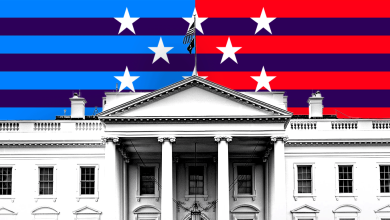
Introduction to Hurricane Milton and its Devastation
Hurricane Milton, a storm of unprecedented magnitude, made landfall in Florida, leaving a path of destruction and tragedy in its wake. As the death toll tragically climbs to 21, communities across the state face the grim task of recovery. This article delves into the storm’s impact on Florida, examining the toll it has taken on lives, infrastructure, and the environment.
Overview of Hurricane Milton: Path and Impact
Hurricane Milton originated in the Atlantic, rapidly intensifying into a Category 4 storm as it approached the Gulf Coast. Its powerful winds and torrential rains wreaked havoc across several Floridian cities. As the storm moved inland, it caused massive flooding, forcing thousands to evacuate and leaving many more stranded in flooded homes.
The Rising Death Toll: 21 Lives Lost
As of the latest reports, Hurricane Milton has claimed 21 lives, with rescue operations ongoing. First responders and local authorities are working tirelessly to account for the missing and aid the injured. This marks one of the deadliest hurricanes to hit Florida in recent history, with residents reeling from the scale of the devastation.
The Devastation of Florida’s Coastal Communities
Hard-Hit Areas: Which Cities Suffered the Most?
Among the worst-hit areas are cities like Fort Myers, Tampa, and Naples. These coastal regions bore the brunt of the hurricane’s force, with entire neighborhoods submerged under several feet of water. The storm surge obliterated homes, while inland flooding damaged critical infrastructure.
Homes and Infrastructure Destroyed: An Overview of Damages
Over 5,000 homes have been destroyed, with tens of thousands more damaged. Bridges and roads were washed out, cutting off access to critical areas. Power outages affected millions, with many still waiting for electricity to be restored. Water and sewer systems have also been severely impacted, further complicating recovery efforts.
Emergency Response Efforts
Florida’s Emergency Services: Immediate Actions Taken
Florida’s emergency services were swift in their response, deploying thousands of National Guard troops and first responders to the hardest-hit regions. Search and rescue missions were launched within hours, and evacuation orders were enforced to minimize casualties. Temporary shelters were set up to accommodate displaced residents.
Federal Aid and Support for Affected Communities
The federal government, in coordination with FEMA, has pledged significant financial and logistical support. Presidentially-declared disaster zones are receiving expedited federal aid, including food, water, and medical supplies. Initial estimates suggest billions of dollars will be required for recovery.
Volunteer and Community-Led Relief Initiatives
In the aftermath of the storm, communities have come together in remarkable ways. Volunteer groups, including local organizations and national charities, have mobilized to provide assistance. Grassroots efforts, including fundraisers and food drives, are supporting those who have lost everything.
Impact on Florida’s Economy
The Cost of Recovery: Initial Damage Estimates
Preliminary estimates suggest that Hurricane Milton caused over $50 billion in damage. Insurance claims are expected to soar as homeowners and businesses grapple with the financial toll. The agriculture sector, a key component of Florida’s economy, has been particularly hard hit, with crops devastated by flooding.
Long-Term Economic Impact on Local Businesses and Tourism
Florida’s tourism industry, already fragile after recent challenges, is facing yet another setback. Many popular tourist destinations were in the storm’s path, and it may take months for hotels, restaurants, and other businesses to recover. The ripple effect on the local economy will be felt for years.
Environmental Aftermath of Hurricane Milton
How Milton Altered Florida’s Landscape: Coastal Erosion and Flooding
Hurricane Milton drastically reshaped Florida’s coastline. The storm surge caused severe coastal erosion, stripping away beaches and damaging marine habitats. In addition to the immediate effects, experts warn that these environmental changes could have long-term consequences for Florida’s ecosystem.
Wildlife and Ecosystem Disruptions Following the Storm
Florida’s wildlife, particularly in coastal and wetland areas, has also been affected. Flooding displaced countless animals, and contamination from industrial runoff threatens fragile ecosystems. Conservationists are working to assess the full impact and develop strategies to mitigate future damage.
Government and Policy Response to Future Hurricanes
Florida’s Updated Hurricane Preparedness Plans
In light of Hurricane Milton, state officials are revising Florida’s hurricane preparedness plans. This includes improving evacuation routes, bolstering infrastructure, and enhancing public communication systems to ensure better preparedness for future storms.
How Federal and State Governments Are Collaborating on Relief
Collaboration between federal and state governments has been crucial in the aftermath of Hurricane Milton. Coordinated efforts have expedited the deployment of resources and ensured a more organized response, though challenges remain in providing aid to remote areas.
Resilience in the Face of Disaster: Stories of Survival
Heroic Acts and Humanitarian Efforts During the Storm
Despite the devastation, stories of heroism have emerged. First responders risked their lives to save others, while ordinary citizens formed human chains to rescue neighbors from rising waters. These acts of bravery are a testament to the human spirit in times of crisis.
Stories of Resilience: How Communities are Rebuilding Together
As the waters recede, communities are beginning the long process of rebuilding. Local leaders are organizing recovery efforts, and residents are stepping up to help one another. Though the road to recovery will be long, the resilience and solidarity shown by Floridians are inspiring.
Conclusion: Lessons from Hurricane Milton
Preparing for Future Natural Disasters
Hurricane Milton serves as a stark reminder of the power of nature and the importance of preparedness. Strengthening infrastructure, improving early warning systems, and enhancing community readiness will be critical in mitigating the impact of future storms.
Moving Forward: Rebuilding Lives and Communities
As Florida begins to rebuild, the focus will shift from immediate recovery to long-term reconstruction. The lessons learned from Hurricane Milton will guide efforts to make the state more resilient in the face of future disasters.



